Preserving Paradise On Daufuskie Island
- Oops!Something went wrong.Please try again later.
With more visitors discovering Daufuskie Island, South Carolina, each year, the Lowcountry gem is focused on both sharing and protecting its unspoiled beaches, mystical marshlands, and rich Gullah culture.
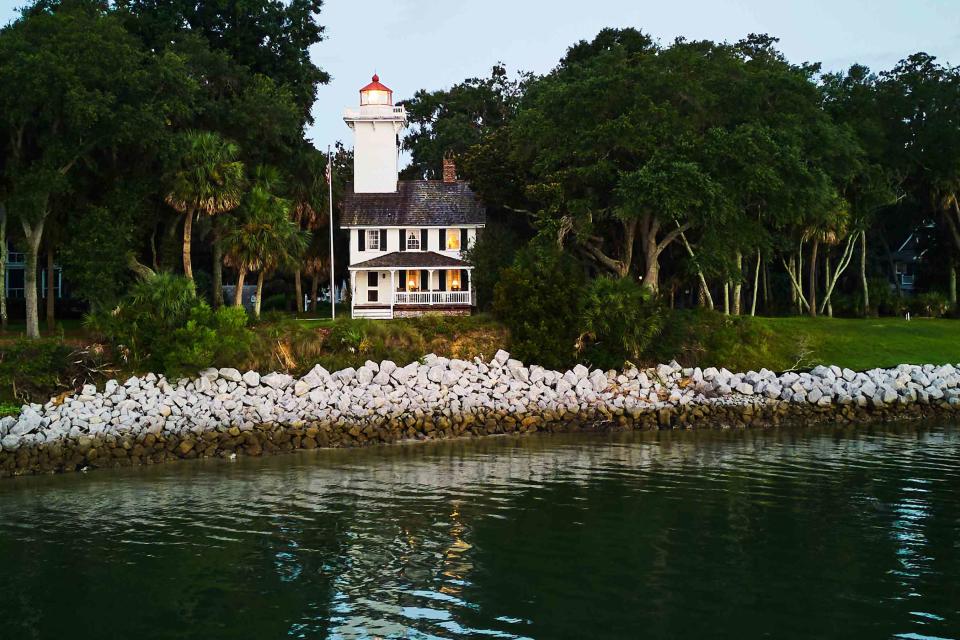
PETER FRANK EDWARDS
Haig Point Lighthouse, which served sailors from 1873 to the 1930s and now offers a unique guesthouse experienceDaufuskie Island is the kind of place that sticks with you. The southernmost of South Carolina’s barrier islands, it’s bridgeless and accessible only by boat. Even though it’s just across the way from tourist-laden Hilton Head Island and Savannah, those few miles of the Calibogue Sound may as well be thousands. On Daufuskie, there are no streetlights, grocery stores, or sidewalks. Paved roads and restaurants are few and far between.
“The island is fringed with the green, undulating marshes of the Southern coast,” author Pat Conroy wrote in his 1972 memoir, The Water Is Wide, which was inspired by his time living and working on Daufuskie. “Deer cut through her forests in small silent herds. The great Southern oaks stand broodingly on her banks. The island and the waters around her teem with life. There is something eternal and indestructible about the tide eroded shores and the dark, threatening silences of the swamps in the heart of the island.”
Conroy spent one transformative year teaching schoolchildren on Daufuskie in 1969. The island and its people forever changed him. After I spent just three days exploring the same dusty paths and deserted shores he fell in love with, it was easy for me to see why.
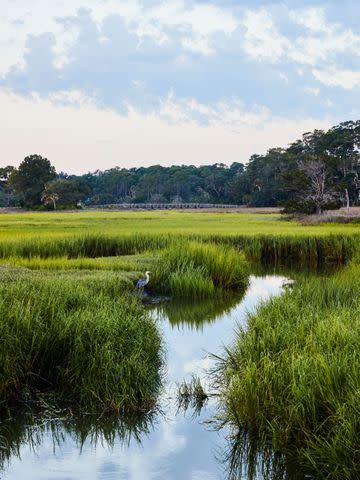
PETER FRANK EDWARDS
Local waterways lined with native spartina grassPreserving History
Just 5 miles long and nearly 3 miles wide, Daufuskie is remarkably small. A golf cart can cover its length in about 30 minutes, but its 500-some residents have all the space they need. At its peak in the early 1900s, the population climbed to almost 3,000. Human activity on Daufuskie dates back 9,000 years to Native Americans, who named it D’awfoskee (sharp or pointed feather) after its shape. Much of its rich history, though, comes from the Gullah community, the direct descendants of enslaved people and other African Americans who created a distinct Lowcountry culture and dialect.
Sixth-generation Daufuskie native Sallie Ann Robinson has made preserving Gullah culture her life’s work. She shares her family’s history via recipes (in three cookbooks), private catering, and tours of the island. Currently, she’s also working with the Daufuskie Island Historical Foundation to turn the old Oyster Union Society Hall into a museum dedicated to ancestors of local Gullah residents, many of whom were the backbone of the once-thriving oyster industry.
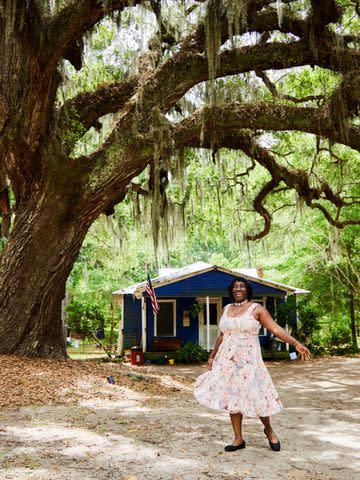
PETER FRANK EDWARDS
Sallie Ann Robinson at her house“I always wanted to return home,” she tells me while expertly maneuvering her bulky tour bus down the narrow paths that snake through Daufuskie’s dense maritime forest. “I love this place. I had one of the best childhoods here. There was free space, and I didn’t have to worry about crime or people taking me. It just stayed with me, so I wanted to come back and be a part of the history.”
In 2019, Robinson began conducting tours to raise money for her nonprofit, the Daufuskie Island Gullah Heritage Society. She plans to use proceeds from her tours to fund the upkeep of the island’s Gullah cemeteries and assist Gullah descendants in converting their few remaining historic homes into vacation rentals.
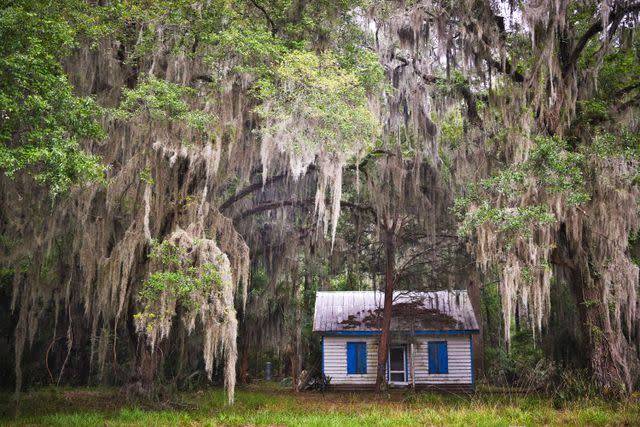
PETER FRANK EDWARDS
Spanish moss framing an old homeWhile we drive, Robinson tells fascinating stories from her childhood—about living off the land and learning to cast a hand-knit shrimp net. And during a stop at the two-room Mary Fields School, where Robinson was once a pupil of Conroy (she is called “Ethel” in his book), I’m lucky enough to see firsthand just how connected the town is.
Ms. Frances Jones was a teacher and principal at Mary Fields. Although Robinson wasn’t one of Jones’ students, she now lives in her former home, which is located just across the street. Today, the old school houses an indigo-dyeing studio and a coffee shop. I’m elbow-deep in a giant vat of an indigo mixture learning about this ancient dyeing technique when I hear buzz that another former student is back for a visit.
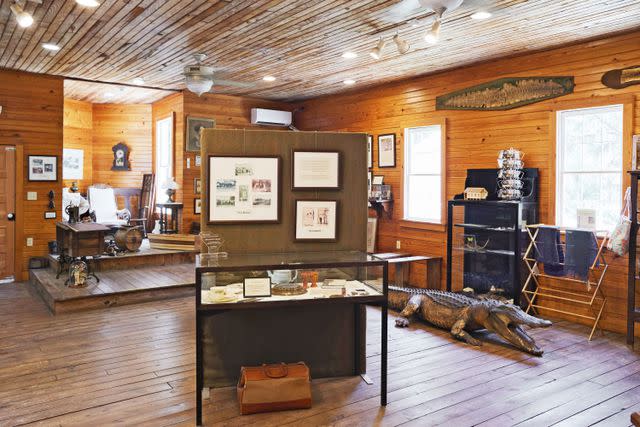
PETER FRANK EDWARDS
The Daufuskie Island History MuseumI run outside to catch Evelyn Graves, now a great-grandmother, who attended the school as a child and also happens to be Ms. Jones’ cousin. Graves, a full-time Savannah resident, is showing her family around her old stomping ground on the same weekend I’m in town.
“I hadn’t been back in about 35 years until just three years ago,” she says while gesturing toward the little white building. “This is like a movie or a dream. It doesn’t feel real.”
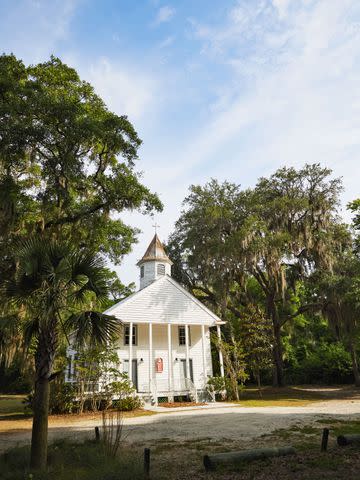
PETER FRANK EDWARDS
First Union African Baptist Church, founded in 1881Preserving Nature
Graves isn’t wrong. Daufuskie is incredibly cinematic. Curtains of Spanish moss hang heavy from ancient live oak trees. Palmettos, magnolias, cypresses, sycamores, and flowering dogwoods fill out the dense forests while deer, birds, and a jumbo-size species known as the fox squirrel scuffle about on their daily business. During golden hour, a warm glow falls over the island, casting long shadows while the humming anticipation of night descends in the wild.
On Bloody Point Beach, miles of uninterrupted coastline reveal stretches of shortbread-tan sand and ripples of cobalt water. When it’s turtle-nesting season, the shores are pockmarked with the temporary homes of soon-to-hatch loggerheads. In off months, it’s not uncommon to see folks riding horseback along the Atlantic.
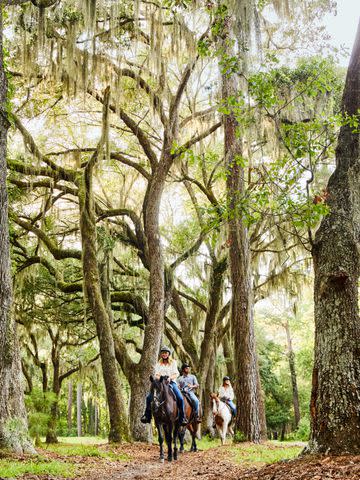
PETER FRANK EDWARDS
Daufuskie Trail Rides (managed by Haig Point, a high-end residential community) offers a chance to see the island from a different vantage point. While moseying along interior trails, look out for a giant rookery tucked into the thick swampland that, depending on the time of year, could be home to hundreds of anhingas or egrets.
Conroy wrote that this place is “beautiful because man has not yet had time to destroy [its] beauty,” and the people here are serious about keeping it that way. The Daufuskie Marsh Tacky Society protects a heritage horse breed called the Marsh Tacky. Small and scrappy, these rare animals were introduced to the area by the Spanish in the 1500s. Haig Point works regularly with the South Carolina Oyster Recycling and Enhancement program to build oyster reefs that help prevent erosion and create a natural habitat for ocean life.
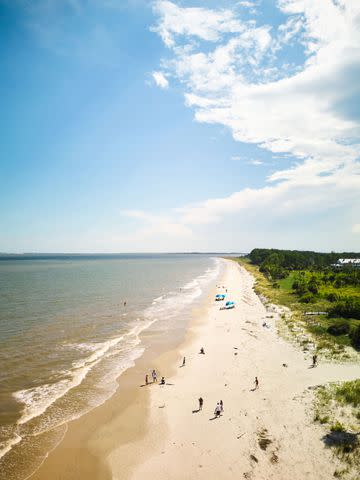
PETER FRANK EDWARDS
Preserving Craft
“On our very first trip here [about 20 or 25 years ago], my husband and I looked at each other and said, ‘This is it,’” says Rhonda Davis, half of the artist duo behind Daufuskie Blues. “When we retired, we were here that year. It’s totally normal for people to come visit and fall in love right away—but it’s not for everyone.” In other words, Daufuskie isn’t your average coastal town.
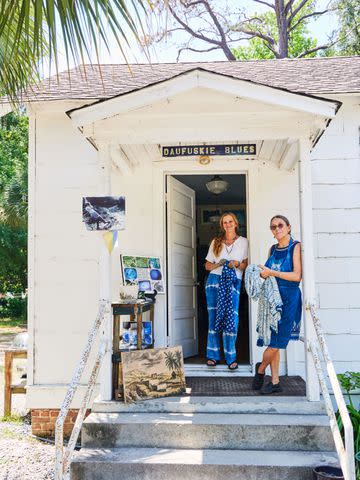
PETER FRANK EDWARDS
Rhonda Davis and Leanne McJunkin Coulter of Daufuskie BluesDavis’ business partner, Leanne McJunkin Coulter, has a similar story. As do their building mates, Pam and Brian Cobb, who vacationed on the island one weekend and came back the next to buy a house. The couple took over the second classroom of Mary Fields School and turned it into a walk-up cafe and bakery called School Grounds Coffee. The two describe their quaint coffee-and-tea shop as a tribute to the teachers.
On a pleasant spring Saturday, Davis and Coulter keep the schoolhouse doors open as visitors trickle in to peruse the displays of indigo-dyed scarves, T-shirts, and dresses as well as paintings and jewelry made by other local artists. Once day-trippers have shopped, they can travel mere minutes to meet some of the community’s other personalities.
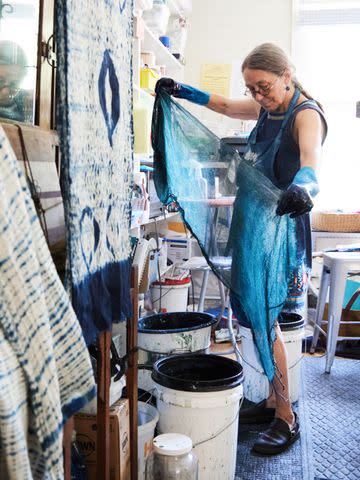
PETER FRANK EDWARDS
Leanne McJunkin Coulter, who has been dyeing with indigo since 2013Chase Allen is the owner and artist behind The Iron Fish Gallery. In many ways, he’s grown up with the island. While working in real estate fresh out of college, he forged a friendship with longtime island artisans Emily and Lancy Burn of Silver Dew Pottery. Wanting to bring a new craft to Daufuskie, Allen began experimenting with metal sculpting. He rented a historic home, then set up a workshop in the yard where he began pounding out colorful fish, crabs, lobsters, mermaids, and other coastal creatures. As The Iron Fish grew, so did tourism on Daufuskie. Somewhere along the way, Allen met his wife, Rachel; welcomed their son into the world; and became an internationally renowned artist. Today, stopping by his open-air gallery is a local rite of passage.
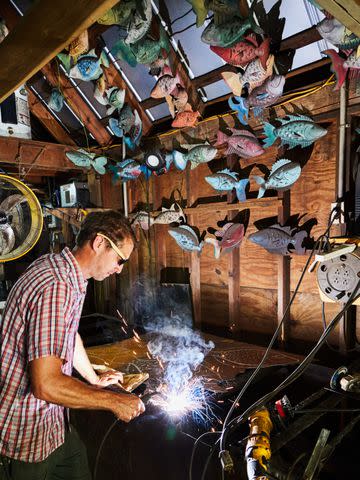
PETER FRANK EDWARDS
Chase Allen of The Iron Fish GalleryA little over a mile down the road, you’ll find Daufuskie Island Distilling. Yes, in true island form, there’s a rum distillery here but no bank. Owner Tony Chase has lived in the area for almost 11 years. Before buying his beachfront home, he’d never set foot on the island. “One night, I was sitting on my couch in Kentucky and said to my wife, ‘Honey, I think I want to make an offer.’ She said, ‘But we’ve never been there,’” he recalls. “But I told her that it just felt right.” Once he was settled in his new home, his mind went to one place. “All I wanted to do was make rum,” he says.
Although you can buy Chase’s rum, vodka, and bourbon online, there’s nothing like ordering a frozen piña colada directly from the source and enjoying it on a rocker overlooking a marshy pond. “I’ve come out at dusk when there were probably 72 white egrets lining the water and a whole family of deer in the back field,” he says. “It’s phenomenal, but that’s every day on Daufuskie—just magical.”
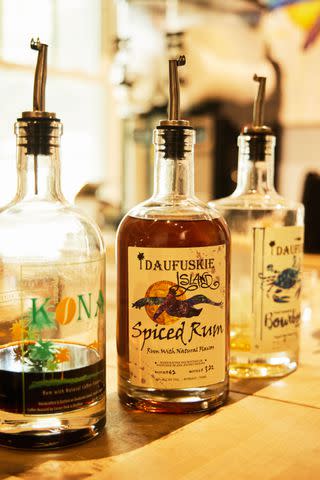
PETER FRANK EDWARDS
On Sunday mornings, some residents can be found zipping their golf carts into the sun-speckled front yard of First Union African Baptist Church. The white-clapboard chapel was built in 1884 and is now the island’s only active church. I slip into the back pew just before 10 a.m. to discover a sea of familiar faces. The congregation rises to sing, fans spin lazily overhead, and a dragonfly flits by the window. Paradise, at least in this moment, has been preserved.
Plan Your Visit
Daufuskie Island has been hiding in plain sight due to the attention given to nearby high-traffic destinations like Hilton Head Island and Savannah. Now, slowly but surely, vacationers are discovering its allure
Riding Over
The Official Daufuskie Island Ferry runs four times a day (five times on Fridays), 365 days a year, from Bluffton, South Carolina. A ride takes about 45 minutes, and a round-trip day ticket costs $50. For large groups, the company also offers private 18-person water taxis. If you’re coming in from Savannah, check the Bull River Marina for a daily water taxi schedule.
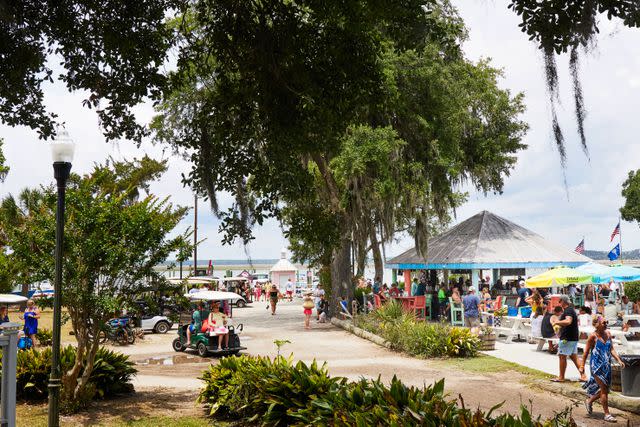
PETER FRANK EDWARDS
Freeport MarinaExploring A Remote Retreat
Waking up on Daufuskie Island is an experience unlike any other, and there are several ways you can swing it. From oceanfront cottages to restored Gullah homes, there are dozens of rentals listed for every type of traveler on Airbnb and Vrbo. Another way to see the island is by booking one of Haig Point’s Discovery Visits, where you can stay in either the historic 1873 lighthouse or the 1910 Strachan Mansion—both located on the private community’s 1,050-acre property. During your trip, you’ll have access to all of Haig Point’s amenities, including 29 holes of golf, two pools, a fitness center, restaurants, a bar, and tennis courts.
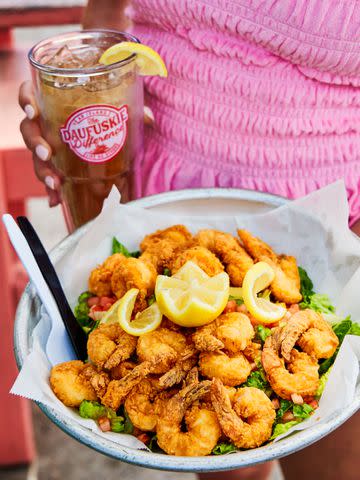
PETER FRANK EDWARDS
Island Eats
Old Daufuskie Crab Company at Freeport Marina is where islanders—and those who have pulled up on their boats for the day—go to gather. Order the Daufuskie Deviled Crab and Scrap Iron cocktail. Then grab an open picnic table, and settle in for a gorgeous sunset over the tidal river. Live music is common on weekends. For more wet-swimsuit, sandy-toe options, try D’Fuskie’s Store & Eatery for its build-your-own pizzas and sandwiches as well as a limited selection of groceries to stock your fridge or cooler for the week.
For more Southern Living news, make sure to sign up for our newsletter!
Read the original article on Southern Living.

